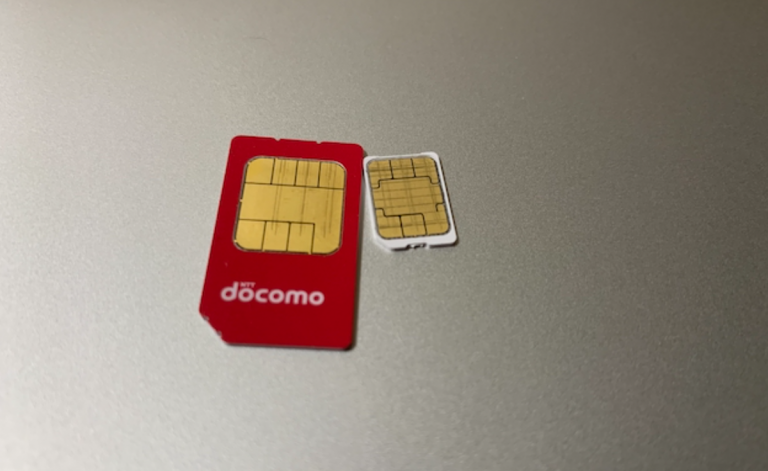
Gone are the days when you would pay over ¥10,000 a month for calls, texts, and a limited amount of cellular data. Now, you have telecommunication companies competing to get clients, offering them the best deals such as free minutes, SMS, or gigabytes of data for as low as ¥3,000 a month.
Gaining access to such subscriptions have also become more accessible, with the big mobile operators AU, Docomo, Softbank, and Rakuten Mobile easing up on requirements and mobile virtual network operators (MVNOs)
A quick explanation of the telecom operators in Japan
There are four big players in Japan when it comes to mobile carriers: Docomo (with about 50% market share), AU, Softbank, and recently Rakuten Mobile. By going for any of these brands, you can rest assured that you will have more plan options, phone choices, and better coverage compared to other companies.
For example, Docomo has the most cell towers, meaning you will get better mobile reception, while Softbank has the most data plans options. On the other hand, AU offers a vast number of smartphones, and Rakuten Mobile comes with numerous perks tied with the company’s e-commerce website, plus sign-up is a breeze.
Then you have the MVNOs, which can be defined as piggyback riders because they rely on the primary carrier’s network but function independently. Some examples of MVNOs are Line Mobile, Hi-Ho, Sakura Mobile, Mobal, UQ Mobile, and Y!mobile.
The best plan for tourists or short-term users
When my now-husband was new in Japan under a student’s visa, he couldn’t get a phone plan from the major operators because they often required a resident card or offered extra fees and higher rates for temporary visas. If you are in this situation, you can get a really close contact or family member to get the line for you and pay them or opt for an MVNO.
Here’s a comparison of the MVNOs followed by the big player carriers and what they offer.
| COMPANY | NETWORK | SIGN UP FEE | CONTRACT PERIOD | CANCELLATION FEE | DATA ONLY PLANS | DATA + VOICE PLANS | ENGLISH SUPPORT |
|---|---|---|---|---|---|---|---|
| Sakura Mobile | Docomo | ¥5500 | None | ¥0 | – | 4GB ¥3278 25GB ¥4378 | Yes |
| Mobal | Softbank | ¥3000 | None | ¥0 | - | 1GB ¥1480 5GB ¥2980 10GB ¥3280 30GB ¥4380 | Yes |
| Line Mobile | Docomo, Softbank, AU | ¥3740 | None | ¥1100 | 2GB ¥660 5GB ¥1078 10GB ¥1870 30GB ¥2970 | 2GB ¥1210 5GB ¥1628 10GB ¥2420 30GB ¥3520 | Limited |
| Hi-Ho | Softbank | None | 1 Year | ¥0 | Starts from ¥847 | Starts from ¥1617 (available in 2GB, 3GB, 10GB | No |
| Docomo | - | None | 2 Years | ¥1100 | Starts from ¥2970 | 5G Unlimited ¥7315 | Select Stores |
| AU | - | None | 1 Year | ¥1100 | - | 4GB: ¥3278 25GB: ¥4378 | Select Stores |
| Softbank | - | None | None | ¥0 | Starts from ¥1,078 | 5G Unlimited ¥7238 | Select Stores |
| Rakuten Mobile | - | None | None | ¥0 | - | Unlimited ¥3278 | No |
Types of phone plans and sim cards
There are three main types of phone plans in Japan tied to the type of SIM card you get. The first is the data-only SIM cards, which give you access to the Internet, but you can’t make calls or send SMSs. On the plus side, you have access to messaging platforms like Line or Facebook messenger, which is basically what many already use.
Next, you have the data + SMS only SIM cards which are great for moments when you need to verify your identity through code sent through text messages or two-way verification services. Lastly, it’s recommended to get the data + SMS + voice SIM card if you will be making calls regularly.
Choosing a particular phone carrier and plan
Now that you’re acquainted with the phone plans and mobile carriers, it’s time to consider which one will serve you best. Here’s a checklist to remember to avoid signing a contract that’s too costly on the pocket.
- Is there a contract period? Does the duration match your stay in Japan?
- Does the MVNO have an activation or sign-up fee?
- Does the operator offer free contract termination (if you need to transfer or leave the country before the period ends)
- Does the company offer English support (in case Japanese isn’t your primary language)?
- Is the payment option feasible? Some don’t accept international credit cards or convenience store payments, meaning you will need to create a Japanese bank account
- Ensure that the data cap matches your needs (including watching videos on the train during a commute to work). Check how much it costs when you exceed that limit and what services are terminated or slowed down past the data cap
- Does the data have limits on tethering or sharing (if you will be using your cellular data as a hotspot)?
Japanese mobile phone plan pros and cons
Major phone carriers used to charge clients ¥10,000 for terminating a contract earlier than the typical two-year period. However, this practice was eventually banned in 2019, and they can only charge you up to ¥1,100 for the pre-termination of a contract.
You also need to be aware of bundling, which is a practice of the major players to increase customer convenience but could be a headache to terminate. For example, you can use your AU phone plan to get a credit card, another line for your family (at a discount), pay utility bills, and video-streaming subscriptions like Netflix and Disney+. While this might be great for when you’re subscribed to the phone plan, escaping these services before the contract duration can lead to hidden fees.
Another uncalculated costs you might incur are domestic calls and text if your plan is not inclusive of free minutes and texts. With domestic SMS costing about ¥30 and calls ¥45 a minute, these could quickly stack up to a high monthly bill.
If you purchased your mobile plan with a phone, you might be interested in using that phone abroad. You can also go through the procedure of opening the line (if you subscribed to a contract with a carrier) because you won’t be able to use the phone with any SIM card except the original company. Some companies require you to go to the store to open the line, while others can be done online.
[Photo 5]
If you’re staying in Japan for more than a year or two, I would suggest going for any of the big brands because you get more with time. For example, I first subscribed to Softbank a couple of years ago and only got a generic Android phone because I had an open-line iPhone. When it was time for me to upgrade to the latest iPhone, I simply logged into my Softbank account, chose an iPhone 12, and got my phone delivered through the mail. Now, for the best part, I didn’t have to pay a single yen! My monthly bill also increased by less than ¥1,000, so that was a nice treat, like getting a new phone for cheap. Of course, this advice can only be maximized if you will be committed to a specific phone carrier for years.
It might seem confusing at first, given the numerous options you have for a mobile phone plan in Japan, but think of it as a way to get the best fit for your communication needs. Whether it’s a new iPhone or unlimited data, you can end up with the optimal subscription.












